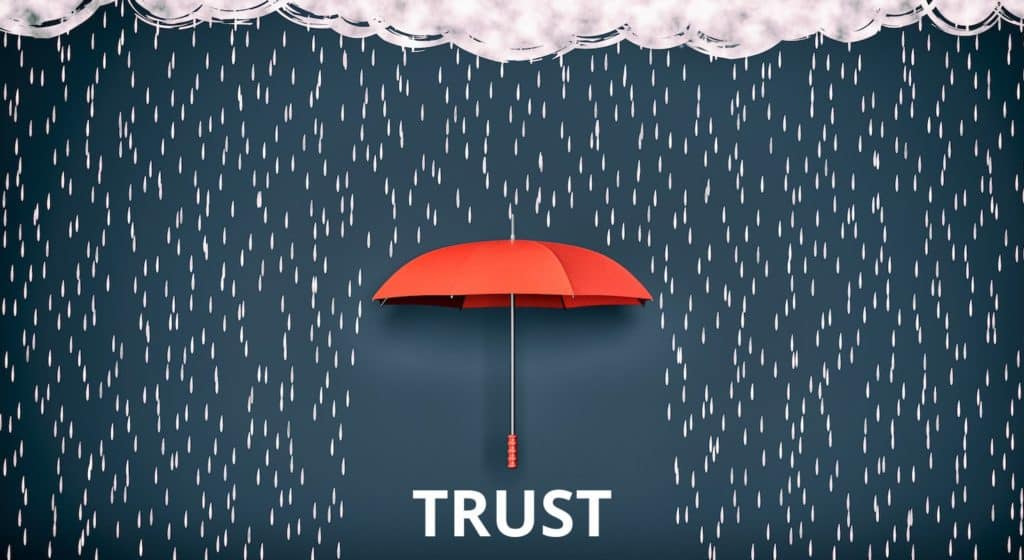Storytelling in sales is not a new concept, and it’s a tactic that takes practice and effort to refine.
In a market saturated with clickbait tactics and empty claims, it’s more important than ever to give potential customers a real reason to believe in your brand. We all know when someone isn’t being real—which means turning a wary stranger into a loyal buyer takes much more than inflated data and slick scripts.

So, what does it take to garner a successful close and gain a repeating client without gimmicks and without being disingenuous?
The answer is trust and connection.
Today’s modern audience wants to feel confident in what they’re getting and who they’re getting it from. When it comes to building trust between a buyer and seller, nothing is more effective—or connective— than the power of a story. Stories help us visualize ideas, retain what we’ve heard, and build upon our shared experiences as human beings.
Recently, my wife and I were on the consumer side of two sales people at a car dealership. We had just begun to explore our options for purchasing a car and this was the first dealership we happened upon. I tell the full story in a recent video but—spoiler alert—we drove off the lot in the rental car we came in. There was no curiosity about our lives, nor any attempt to relate to us until the very end of our visit when one of the gentleman, the floor manager, offered up a story about how he, his wife and their five kids had been driving in the same make and model we were looking at when they were struck by a drunk driver on the passenger side where his wife was seated.
“The car skidded for 40 feet,” the floor manager recalled, “and we looked around, realizing everyone was ok. After returning from getting checked out at the hospital, I told my wife, ‘you know, I”m not sure you would still be here if it wasn’t for that car.”
My heart beating just a bit faster, I looked at my wife, took a breath and said, “You know, safety is really important to us. We’ve got two kids.”
The reason I share this experience with you is to illustrate the power of story. The fact that the floor manager was able to resurrect even the tiniest shred of connection after the initial disconnected, “salesy” experience we had, speaks to the tremendous effect that a story can command.
The catch is that not just any story will do. You need a story that’s genuine, relatable and delivered at the right moment. You need a story that is told in a manner that takes your listener’s concerns and needs into consideration, while also being easy to recall in any situation.
You need a touchstone story.
What is a Touchstone Story?
Using a touchstone was one of the earliest methods for testing the quality of metals. A metal of proven quality would be rubbed against the touchstone, leaving behind a distinctive streak. When someone wanted to test a coin or object, they’d rub it against the touchstone and compare the marks. A fake could thus be easily spotted and a bad deal avoided.
Today, the word touchstone is often used to describe something that helps prove reliability and offers assurance. And these are exactly the things you want to convey to your prospect.
A touchstone story is a personal experience that successfully does the following:
- Shows the potential customer you understand their problems.
- Conveys your values and intentions in an authentic manner.
- Lets the customer know why you stand behind your service.
A touchstone story acts as an anchor to the whole of your selling strategy. You can return to it again and again throughout a presentation or meeting to refocus on the connection you’ve built with a prospective buyer.
The Power of Storytelling in Sales
Storytelling in sales is effective because it gives the potential client a reason to keep listening. A touchstone story is even more effective because it provides a psychological reward for listening—connection.
People want to feel heard and understood. By sharing your experience, you show you relate to what your client is going through and want to help. A touchstone story bridges the gap between a buyer’s preconceived notions and what you can truly offer them.
Here are 5 ways a touchstone story will lead to more connection and trust:
- Stories give the listener a reason to pay attention to what you’re saying. Our brains are hardwired for story. By their very nature, facts or experiences presented as stories are more engaging. Telling a genuine story avoids turning a prospect off with boring facts or lengthy monologues—which are often sales-killers.
- Stories help illustrate your values and character. When you open yourself up and show you are willing to share information about yourself, it gives a potential customer a chance to know you better. This act of vulnerability through storytelling is what builds and increases trust.
- Stories are more likely to be meaningful to your audience. The best stories are designed to impact the audience and the storyteller. There is a reciprocal relationship between listening and telling. Listening shapes telling and telling shapes listening—just like water being poured into a bowl takes the shape of a bowl. The connection that ensues between the listener and the storyteller is what creates a meaningful experience.
- Stories give context to the solutions you offer. Your potential customers will be able to visualize how your product or service can impact their life in a positive way, especially if they know you’ve faced similar problems.
- Stories bring the focus to what is most important. When you’re passionate about something, you’ve got a lot to say! A touchstone story helps focus your message on the most relevant and important aspects of what you can offer a client.
Why You Need a Touchstone Story
Storytelling is an art and requires both preparation and practice. Most of us wouldn’t volunteer to give a speech before a large audience without preparation and practice—the result would likely be disastrous. Nerves, lack of direction, and rambling can be some of the consequences; and most of us have probably seen this happen once or twice. It’s painful, and it makes you pity the person speaking.

Developing a touchstone story that’s relevant and will resonate with a prospect on the spot isn’t an easy task, but it’s so very worthwhile because once you’ve developed yours it’s always available and can be easily applied to multiple situations in meaningful ways. When you create your touchstone story, you give yourself a sturdy tool to make sales and grow your business.
How to Develop a Touchstone Story
Developing a touchstone story requires some elbow grease and soul-searching. The best ones are created over time and continually refined. You’ll want to think about both your future customers and why you’re passionate about your brand. When you get your touchstone story right, others will be able to tell that you’re sharing from the heart and trying to relate to them.
There are many different ways to create a touchstone story, but we’ve condensed everything you need to know into a simple formula that’s easy to understand and implement. Whether you feel like a great orator or not, our ebook, The Essential Guide to Selling by Telling Your Touchstone Story, will help you feel confident in sharing more about your brand in an authentic, relatable way. Download your copy here today.




